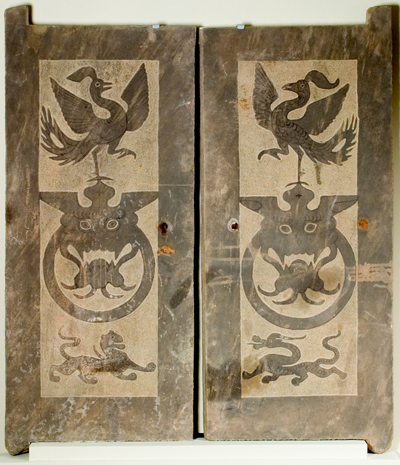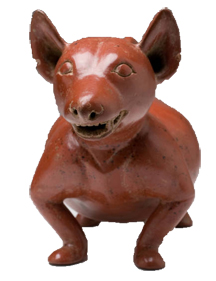

Art proliferates in stable and prosperous societies like the one established by the Han Dynasty. Chinese people used low relief sculptures and paint to decorate tombs. Stone panels, such as these seen here were used to mark tomb entrances.
The sculptures carved into these doors are Chinese directional animals, which are the same ones used to represent the zodiac. On top is the Red Bird of the South, which symbolizes luck, happiness, virtue, grace, and heaven's favor. The two sculptures in the middle represent a mask. The Green Dragon of the East is depicted on the lower right. Dragons were believed to bring good luck. On the lower left is the White Tiger of the West, who represents serene strength and power. The White Tiger was often used on soldiers' shields going into battle. If worn on a military uniform, the White Tiger indicated high rank. The use of the White Tiger on these tomb doors means the tomb may have belonged to a military officer or landowner.
Tomb Doors, 202 BCE -220 CE
Unidentified Maker, Chinese
(Han Dynasty)
46 3/4 inches H; 19 11/16 inches W; 1 5/8 inches D
Gift of Alconda-Owsley Foundation
1997.028.000a-b
64 CE Rome burns.
132 CE Han Dynasty; Invention of first seismoscope for detecting earthquakes.
1000 - 1500 Romanesque and Gothic styles in Europe.
1271 Marco Polo travels to China.




